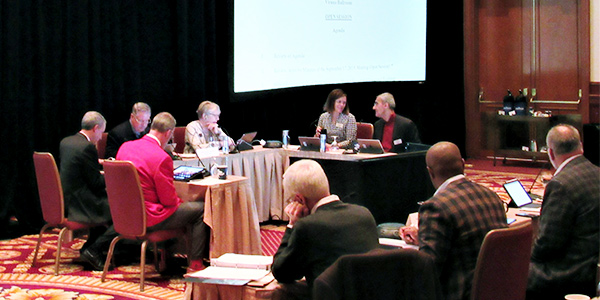By Amanda Durish Cook
INDIANAPOLIS — MISO avoided maximum generation alerts and events this fall despite dealing with record-breaking temperature swings in its southern footprint.
The RTO’s nearly 107-GW fall peak on Sept. 11 was “well below” the forecasted 112-GW peak for the season, MISO Executive Director of System Operations Renuka Chatterjee reported to the Markets Committee of the Board of Directors on Tuesday. This year’s fall peak also paled compared with 2018’s almost 115-GW record.
Real-time prices were likewise down, averaging $25/MWh, a 23% decrease year-over-year. Chatterjee put lower prices down to “surging” natural gas production.
However, the modest peak and prices belie the volatility in fall temperatures, with hot weather alerts in the southern parts of the footprint in early September and October, followed by a cold weather alert by mid-November.
“Both of these weather events brought record-setting temperature swings in our footprint. I’ve heard that close to 100 temperature records were broken,” Chatterjee said of a hot weather alert Sept. 5-9 and a cold weather alert Nov. 12-13, both in MISO South.
MISO President Clair Moeller said operations teams showed “exemplary” performance in handling both situations.
Chatterjee said “unseasonably extreme cold” settled in the Central and South regions during the November event. “If these temperatures happened in January, we wouldn’t be talking about them,” she said.
She said MISO control room employees were busy managing congestion and responding to outages on Nov. 13.
MISO was able to avoid issuing a maximum generation event this fall, though Chatterjee said conditions in MISO South would have warranted it for about 30 minutes on Nov. 13.
“In hindsight, we could have issued that notification for a short time,” Chatterjee said.
Last fall, MISO entered a maximum generation event in mid-September. (See MISO in Conservative Ops After Emergency Declaration.)
Tricky Mid-November
MISO Independent Market Monitor David Patton called the conditions on Nov. 13 “bizarre.” He said Little Rock, Ark., registered at 19 degrees, about 30 degrees below normal. He also said a large MISO South generator kept delaying its start time during the day, losing out on roughly $1 million worth of payments in the process and complicating the supply picture.
Patton also said his staff is still investigating a request from SPP to cut MISO flows on the regional dispatch limit that day to 1,500 MW, resulting in additional congestion costs of $876,383 to MISO. MISO neighbors Southern Company and SPP were also facing challenging supply conditions Nov. 13, Patton said.
“What happens when we derated this, not only did it cost MISO and its customers a lot of money, but it also caused MISO to violate a constraint in MISO South,” Patton said.
Patton said if MISO were granted “better visibility of neighbors’ constraints” in real-time, it might have been able to provide targeted relief instead of simply following SPP orders to “massively derate” the flows.
Patton said MISO operators likely didn’t have an appropriate amount of time to react to SPP’s request.
“MISO was put in the position of having to derate the [Regional Dispatch Transfer] and wasn’t able to offer alternative solutions. When they’re asked to derate due to reliability concerns, you have to,” Patton explained.
“This has seemed to blow the cover off areas that we don’t have much progress on. We don’t have visibility into our neighbors’ decisions, and they might not have visibility into our decisions, and that’s costing economic decisions,” MISO Director Barbara Krumsiek said.
Patton also said he continues trying to convince MISO’s transmission operators to adopt dynamic transmission line ratings. He also said MISO should “more actively” validate transmission ratings. He said the suggestion would likely make it into his 2019 State of the Market Report.
MISO Enters Winter
Chatterjee said MISO continues to expect a 104-GW winter peak, with about 115 GW worth of resources on hand to mitigate it. She said MISO is especially concentrating winter preparations on outages. Over the last five years, MISO experienced an average 27 GW worth of generation outages on monthly peak hours December through February.
Moeller said many of the outages occur in MISO’s older, steam generation.
“We’re seeing outages of the older, steam fleet continue. In many cases, they’re aging so [operators see] no reason to put money in them,” Moeller said.
This is the first winter MISO will use a $1,000/MWh soft cap and a $2,000/MWh hard cap on energy offers after MISO Files Offer Cap Revisions Ahead of Schedule.)
Additionally, MISO in November began publishing a first edition of its multiday operating margins, which predicts supply conditions six days in advance. The multiday forecast is for informational purposes only and is not a multiday financial market.


